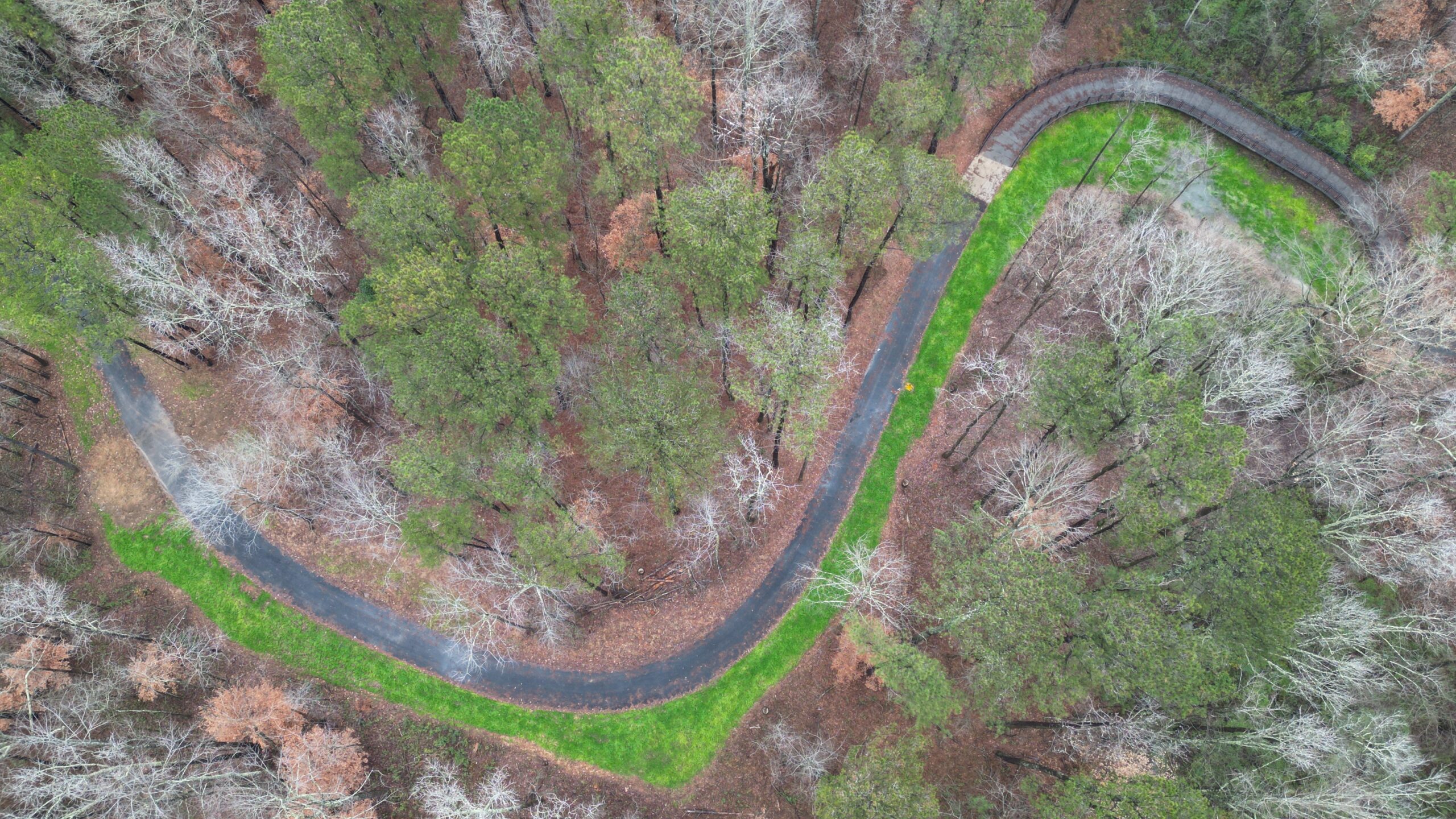In the past 10 years, Sugar Hill has surged with downtown development. Additions like
The Bowl, E Center and Eagle Theater make up a buzzing mixed-use destination adored
by Gwinnett County locals and visitors alike.
The thriving downtown entertainment mecca—affectionately known as the SHINE
District, a nod to the city’s storied moonshining past—offers another good reason for
Gwinnett County residents to party it up in their own backyard, instead of Ubering ITP at
a hundred bucks a pop on a Saturday night. However, just outside the dazzling arts and
entertainment of Sugar Hill’s city center lies a budding outdoor transformation quietly
taking place.
“There’s been a lot of welcome attention given to our downtown,” said Mayor Hembree.
“But now we’re excited to focus our energy on the wonderful outdoor potential of Sugar
Hill.” His goal is for Sugar Hill to be a walkable city. Gold Mine Park’s recent ribbon
cutting made strides toward this goal, where the city celebrated the completion of Phase
One of the Sugar Hill Greenway.
“We were strategic in starting the Sugar Hill Greenway downtown,” said Mayor
Hembree. “We view downtown as the commercial hub of the greenway while also
providing an excellent alternative to driving downtown.”
The first phase of the Greenway was a five-mile stretch of what will ultimately be an 11.5-
mile path around the city with approximately 16.5 miles of trail. The multi-use pathway
welcomes pedestrians, cyclists and other non-motorized vehicles and will connect
neighborhoods, schools, parks and other community facilities. The Greenway begins in
downtown Sugar Hill at Cornerstone Park, continues past the splash pad and trails at E.
Robinson Park, and ends at Gold Mine Park.
While the Greenway is undoubtedly an exciting addition to a young(-ish) city bubbling
over with shiny new things, it’s not the only natural attraction gaining the attention of
outdoor enthusiasts. Sugar Hill’s northern border is Lake Lanier, while its western border
is the Chattahoochee River and the Chattahoochee River National Recreation Area, which
puts three of their units in the Sugar Hill community—Bowmans Island, Orrs Ferry and
Settles Bridge. These provide ample hiking trails, kayaking, bird watching, fishing and
more. Additionally, the National Park Service recently completed a trails master plan
that includes a proposal to expand the mileage of the trails, which will create even more
hiking opportunities for visitors and residents.
“I think people are also going to be amazed at the amount of green space that Sugar Hill
has,” said Mayor Hembree. “We’ve invested a lot in our parks, and the good thing is we
have county and federal amenities that will act as a buffer against overdevelopment to
preserve what we need to.”
As far as the best outdoor spot to visit in Sugar Hill, Mayor Hembree recommends:
Bowmans Island – Don’t miss the trailhead behind Island Ford Baptist Church which
snakes down to the Chattahoochee River and brings a sense of the North Georgia
mountains to metro Atlanta!

